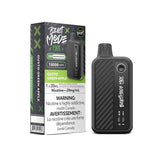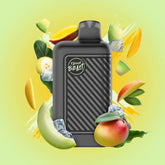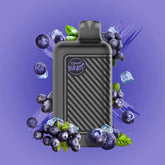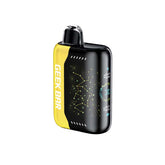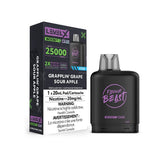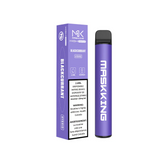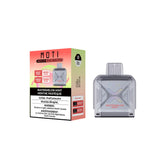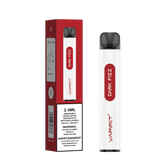New Year, New Taxes for These 5 Provinces
American countries have continued to strengthen their regulations and restrictions on vaping; in the United States, more states like Kentucky have further banned flavored vapes, with the exception of very few approved by the FDA. All the way to Canada, new provinces have joined the Coordinated Vaping Product Taxation Agreement, which was revised and re-enacted on July 1, 2024.
Canada's Coordinated Vaping Product Taxation Agreement establishes a unified framework for taxing vaping products across participating provinces and territories. This system aims to streamline the taxation process and ensure consistent application of duties on vaping products nationwide. This article explains what the agreement is, the provinces involved, and other vaping laws that exist in Canada, nationwide.
What is the Canada Coordinated Vaping Product Taxation Agreement?
While vaping remains a popular alternative for smokers, the regulatory framework surrounding it is becoming more complex. The Canada Coordinated Vaping Product Taxation Agreement was introduced to establish a unified tax system for vaping products across participating provinces and territories.
This collaborative effort between federal and provincial governments ensures consistency in how vaping products are taxed, aiming to address health concerns and regulate the market. The agreement was initially introduced in 2022, and over time, more provinces have joined to enforce these taxation measures. For vapers, this means that in participating provinces, the cost of vaping products will increase due to higher taxation rates.
Participating Provinces
Initially, the taxation agreement was implemented in select regions, but as of this year 2025, five new provinces have joined the accord. The new provinces to join include:
· Alberta
· Manitoba
· New Brunswick
· Prince Edward Island (PEI)
· Yukon
Highlights to Note:
1. Alberta: Previously known for minimal vape-related taxes, Alberta's entry into the agreement marks a significant shift. The province aims to curb underage vaping while maintaining accessibility for adult smokers seeking harm-reduction alternatives.
2. Manitoba: With a steady increase in youth vaping rates, Manitoba's decision aligns with its broader public health initiatives.
3. New Brunswick: The province is focusing on balancing public health priorities with revenue generation.
4. Prince Edward Island: PEI has been proactive in enforcing vaping laws, and joining the taxation agreement strengthens its regulatory framework.
5. Yukon: The territory’s participation ensures even remote regions adhere to consistent taxation policies, supporting nationwide efforts to combat youth vaping.
The pioneer provinces in this agreement are: Ontario, Quebec, Northwest Territories, and Nunavut.
Key Notes of the Agreement
· Federal-Provincial Collaboration: The agreement aligns federal excise taxes with provincial levies, avoiding discrepancies in pricing.
· Tax Rates: A standardized rate applies to all participating regions. For example, an excise tax of $1 per 2 mL of e-liquid up to 10 mL, with an additional $1 for every 10 mL more.
· Coverage: It includes all vaping liquids, whether nicotine-containing or not, ensuring there are no loopholes for vape brands and stores to leverage.
· Revenue Allocation: Funds generated are often redirected to health programs, anti-vaping campaigns, and smoking cessation initiatives.
Canada's Taxes on Vape Products Explained
Canada’s taxation on vaping products reflects the country’s concerns about public health and the rapid youth acceptance of vaping. Since 2022, the federal government introduced an excise tax structure applicable nationwide. Key details include:
· Base Tax: $1 per 2 mL of e-liquid up to 10 mL.
· Incremental Tax: An additional $1 for every 10 mL over the initial 10 mL.
For example:
· A 30 mL bottle of e-liquid would incur a $7 excise tax.
· A 60 mL bottle would face a $13 excise tax.
Provincial and Territorial Add-Ons
Some provinces and territories have imposed additional taxes on the federal tax:
· British Columbia: A 20% sales tax on vaping products.
· Nova Scotia: $0.50 per mL of e-liquid, one of the highest rates in Canada.
· Ontario: A 13% HST (Harmonized Sales Tax) applies, but no specific vape excise tax is levied beyond the federal structure.
In some provinces, an additional vaping duty is applicable, which further increases the federal rates. In such provinces and territories, the total duty rounds off to $2.24 per 2mL for the first 10mL, and $2.24 per every 10mL extra for amounts exceeding the first 10mL.
To proof that the vaping products sold in provinces where these taxes are active have been duly cleared of the taxes, the products are stamped with a province-specific excise stamp. Meanwhile, for provinces that do not participate in the coordinated system, a peach-colored Canada vaping excise stamp is required on the vape products sold in stores in those jurisdictions.
The coordinated system is backed by the Canada Revenue Agency (CRA) to ensure a standardized approach to vaping product taxation across participating territories.
| Province/Territory | Federal Tax | Provincial Tax | Excise Stamp |
|---|---|---|---|
| Federal (Base Rate) | $1 per 2mL (first 10mL), then $1 per 10mL | None | Peach-colored (for non-coordinated provinces) |
| British Columbia | Federal tax applies | 20% sales tax | BC-specific stamp |
| Nova Scotia | Federal tax applies | $0.50 per mL | NS-specific stamp |
| Coordinated Provinces | Federal tax applies | Additional duty ($2.24 per 2mL first 10mL, then $2.24 per 10mL) | Province-specific stamp |
| Non-Coordinated Provinces | Federal tax applies | No extra tax | Peach-colored stamp |
Impact on Pricing
The cumulative effect of federal and provincial taxes has led to higher prices for consumers. For example, in Nova Scotia, a 60 mL bottle of e-liquid could cost nearly double its pre-tax price due to combined federal and provincial taxes.
Rationale Behind Taxation
· Public Health: The taxes aim to discourage youth from picking up vaping by making it less affordable.
· Revenue Generation: Funds are often used for health programs and awareness campaigns.
· Market Regulation: Taxes also ensure that vaping products are not disproportionately cheaper than cigarettes, maintaining the balance between accessibility and deterrence.
Is Vaping Banned in Canada? Canada Vaping Laws as it Affects Vapers
Vaping is legal in Canada, but you must be above 19 years. Also, some provinces have strict regulations on vape sales, marketing, and usage.
Federal Laws
The Tobacco and Vaping Products Act (TVPA) regulates vaping products nationwide to the following subjects:
· Age Restrictions: Vaping products cannot be sold to individuals under 18 years.
· Advertising Restrictions: Promotions that appeal to youth, such as fruity flavors or flashy packaging, are prohibited.
· Health Claims: Vendors cannot claim that vaping is safer than smoking without scientific validation.
Provincial Variations
While the federal framework sets the baseline, provinces enforce additional rules:
· British Columbia: Caps nicotine concentrations at 20 mg/mL and bans specific flavor categories.
· Quebec: Limits advertising visibility, even in adult-only stores.
· Nova Scotia: Enforces a complete ban on flavored vaping products.
Public Spaces
Most provinces restrict vaping in public areas, aligning with smoking bans. Common prohibited zones include schools, playgrounds, and workplaces.
How Does Canada's Tax on Vapes Affect Vapers in the Country?
The increasing taxes on vaping products significantly impact vapers across Canada, particularly those using these products as smoking cessation tools. Vaping, once considered a cheaper alternative to smoking, is now approaching parity with traditional cigarettes in terms of cost.
A pack-a-day smoker switching to vaping might save less than anticipated due to high taxes. Budget-conscious vapers may resort to unregulated or over-the-counter purchases to buy their favorite vape.
Not to forget that the higher costs could deter smokers from transitioning to vaping; low-income earners may cease to be interested in vapes any longer, while small vape shops may face challenges competing with large retailers that can deal with the tax-related price hikes without feeling the heat.
Verdict
The Canada Coordinated Vaping Product Taxation Agreement and exercise duties have made vape products more expensive in provinces that are in participation of the accord. This year, 5 more provinces joined the accord: Alberta, Manitoba, New Brunswick, Prince Edward Island, and Yukon.
Well, the taxes are applicable if you’re ordering your vape products or e-liquids from the participating provinces. If you reside within these provinces and shop online for your vapes, as long as the vape shop operates outside the taxed province, you will be safe from the additional cost.
It is important that vapers residing in these provinces are abreast with these tax fees, so they can know how to source their vape products.

